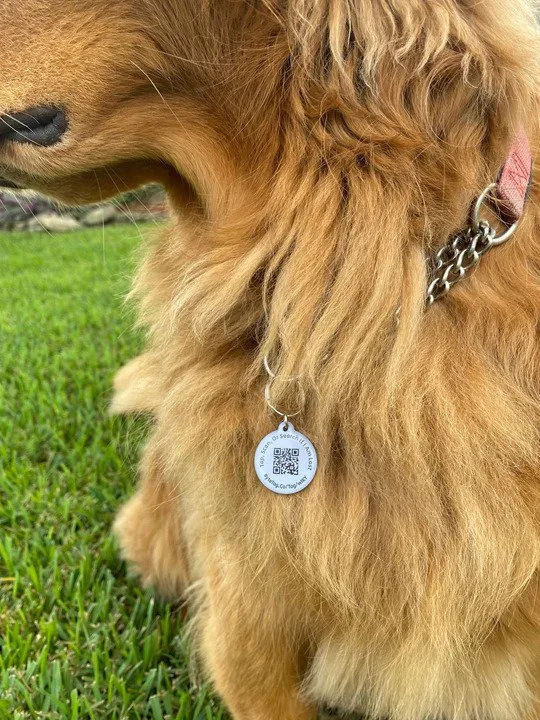Everything You Need to Know About Shopping for the best Pet Tag
Pet tags are essential if you own a pet. Think of it as a form of national ID with all your important information in it such as social security number, address, date of birth, parent’s name, and other important information. Getting a pet tag for your dog will eventually save you the stress and the cost in the future. But hopefully, you won’t be needing it. Pet tags serve as another layer of protection or insurance when you have a dog to look after.
There are cases of stolen dogs and a pet tag is essential for tracking. There are also instances where dogs can be lost when introduced to a new environment. Having a pet tag is helpful to whoever can find your dog and would know where to return it. There are pet tags that contain information more than their name and address. The more information it contains the more helpful it is.
Before you get excited about buying a pet tag for your dog, it is essential to consider these factors first before making any purchase.
Key Factors To Consider To Ensure You Make The Right Choice
Price Range and Budget
When it comes to purchasing a pet tag, it's important to consider your price range and budget. The price of pet tags can vary depending on factors such as the material used, the level of personalization, additional features, and the brand or manufacturer.
It's essential to find a balance between your desired quality and features while staying within your budget.
Keep in mind that while some tags may have a higher upfront cost, they might offer greater durability and longevity, making them a worthwhile investment in the long run.
It's also worth exploring different options available in the market, as you might find affordable tags that still meet your requirements.
By considering your budget and exploring various price ranges, you can find a pet tag that offers a good balance between affordability and quality, ensuring that your furry friend remains identified and protected without breaking the bank.
Materials and Durability
Choosing the right material for your pet's tag is an essential consideration when it comes to both longevity and style. The material you select not only determines the tag's durability but also plays a role in its resistance to various environmental factors. From classic metals like stainless steel to modern options like durable plastics and silicone, there is a wide range of materials available in the market. Each material has its own unique properties and advantages, read below to learn more.
Plastic tags
Pros: Light-weight, no metal sound which others find to be annoying
Cons: Can be chewed easily
Metal tags
Pros: Durable, Not easy to break
Cons: Can rust over time, the jingling sound of the metal may be annoying for others
Silicone
Pros: Durable, no metal sound which others find to be annoying
Cons: Can be pricey as compared to plastic or metal tags
Wood
Pros: easy to personalized
Cons: can wear and tear over time
Size and Shape
Selecting the appropriate size and shape for your pet's tag is crucial for both comfort and readability.
The size of the tag should be proportionate to your pet's collar, ensuring it is neither too large nor too small. A tag that is too big may be cumbersome for your pet, while a tag that is too small might make it difficult to read the engraved information.
Additionally, consider the shape of the tag, as it can affect both aesthetics and legibility. Popular options include traditional shapes like circles and rectangles, as well as fun and whimsical shapes like bones, hearts, or paws.
While it's important to choose a shape that reflects your pet's personality, be sure to prioritize readability to ensure the tag can be easily understood if your pet goes missing. Finding the right balance between size, shape, and readability will result in a pet tag that looks great and serves its purpose effectively.
Personalization Options: Engraving vs Customization
The demand for personalized pet tags has surged, with pet owners seeking unique and customizable options to reflect their pet's individuality and personality.
The availability of various personalization options on pet tags has revolutionized the way we express our love and connection to our pets:
Engraving provides a permanent and durable marking on the tag, ensuring that the information remains legible even with regular wear and tear.
Customization refers to the ability to add unique designs, symbols, or patterns to the pet tag. Customization options can include adding colors, images, or unique shapes that reflect your pet's personality or your personal preferences. Customized tags allow for more creative freedom and can be a fun way to make your pet's tag stand out.
It's important to note that engraving and customization are not mutually exclusive. In many cases, pet tags can offer both engraving and customization options, allowing you to personalize the tag with both essential information and unique design elements. This gives you the opportunity to create a pet tag that is not only functional but also visually appealing.
In the end, the choice between engraving and customization for your pet tag ultimately depends on your personal preferences and the specific needs of your pet.
Reflective and Illuminated Tags
When it comes to ensuring your pet's safety, reflective and illuminated tags are invaluable.
These types of tags are designed to enhance visibility, especially during low-light conditions or at night. Reflective tags feature a reflective coating or material that reflects light, making your pet more visible to drivers and pedestrians in dimly lit environments. This added visibility greatly reduces the risk of accidents or your pet getting lost.
On the other hand, illuminated tags incorporate built-in lights, typically LED, which provide a constant source of illumination. These tags are particularly useful in complete darkness or when your pet roams in areas with minimal lighting. The bright glow emitted by illuminated tags not only helps you spot your pet easily but also makes them more visible to others.
When considering reflective or illuminated tags, opt for high-quality ones that are durable, waterproof, and long-lasting, ensuring your pet remains visible and safe in all lighting conditions.
Ease of Attachment and Removal
Ensuring ease of attachment and removal is an important consideration when selecting a pet tag. The attachment mechanism plays a vital role in securely fastening the tag to your pet's collar.
Different attachment options are available, including split rings, S-hooks, or quick-release clips.
Split rings are commonly used and provide a secure and permanent attachment, but they can be a bit more challenging to manipulate.
S-hooks offer a convenient option for easy attachment and removal, allowing you to quickly swap tags between different collars if needed.
Quick-release clips provide the ultimate convenience, enabling you to easily snap the tag onto the collar without the need for additional tools. Regardless of the attachment mechanism you choose, make sure it is reliable and durable to prevent accidental detachment. Prioritizing ease of attachment and removal ensures that you can effortlessly update or switch tags when necessary while keeping your pet's identification intact and secure.
Additional Features and Technology
Technology has allowed pet tags to be more unique than it was before. There are systems available which contain information more than the pet’s name and address. Information such as the dog’s medication, food allergies, parents, and others can be included in a QR code or pet website system. Pet tags with GPS systems also help the tracking of pets easily.
There are also apps such as Finding Rover dedicated to pets. It uses facial recognition to store your pet's data in its database. This is helpful in case your pet gets lost.
Information Needed in a Pet Tag
Now that you know the key factors in choosing the right pet tag, it is essential to understand the information necessary for a pet tag.
This crucial information can reunite a lost pet with its worried owner or offer critical details in case of an emergency.
Pet's Name: A pet tag with the pet's name helps in quickly identifying the animal. If a pet gets lost or wanders away from home, having its name on the tag makes it easier for strangers or animal control officers to address the pet properly which can help reduce the stress of the pet.
Owner's Name: The owner's name on a pet tag allows anyone who finds a lost pet to easily identify the owner. It's important to note that this should be balanced with privacy considerations. Some owners may choose to use only their surname or initials on the tag to avoid sharing their full name.
Contact Information: Include at least one phone number where you can be reached. This is essential for someone who finds your dog to quickly contact you and facilitate their safe return.
Address (Optional): Including your address on the tag can be helpful if your dog wanders off within the neighborhood. However, consider your comfort level with displaying your full address, as some pet owners prefer to exclude it for privacy reasons.
‘I’m microchipped’ text on the tag (if applicable) : By indicating on the tag that your pet is microchipped, you're informing anyone who finds them that they have a unique identifier implanted under their skin. This message serves as a prompt for the person to take the pet to a veterinarian, animal shelter, or a designated location where a microchip scanner is available. The "I'm microchipped" text can potentially expedite the process of reuniting you with your pet, as it encourages individuals to take the necessary steps to access the contact information linked to the microchip.
Medication Information: If your dog requires medication, it can be crucial to include a note on the tag indicating the medication name and any specific instructions. This information is particularly important if your dog has a medical condition that requires immediate attention or regular medication administration.
Food Allergies: If your dog has food allergies or specific dietary restrictions, you may choose to include a note on the tag to inform anyone who finds them. This can help ensure that your dog is not given any food that could cause an allergic reaction or health issue.
Product Recommendation
Check out this product from Byte Tag (*affiliate link). Not only are their pet tags affordable, but they also incorporate QR code functionality. With a simple scan, you can access your dog's information instantly. Additionally, in the unfortunate event of losing your dog, a GPS notification will promptly provide you with the location coordinates. How cool is that! You will be reunited with your pet in no time.
As a pet owner, making sure that your pet wears a pet tag offers some peace of mind. Foundanimals.org revealed that at least one in three pets will be lost at some point in their life. Having a pet tag on your furry companion could make the rescue faster and easier as compared to having none at all.



